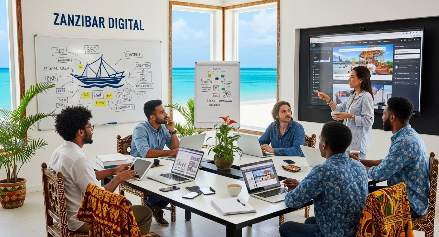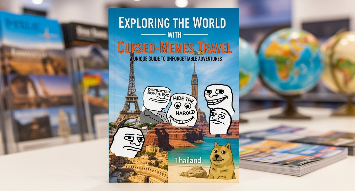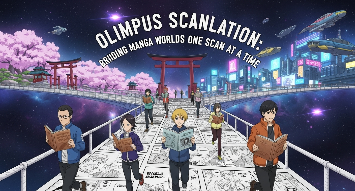
Digital Marketing Zanzibar: Harnessing the Spice Island’s Online Potential
Welcome to the heart of the Indian Ocean’s digital renaissance. If you’ve ever wondered how to connect with Zanzibar’s vibrant businesses, tourism hotspots, and thriving startups online, you’re in the right place. In this deep dive, we’ll unpack everything you need to know to craft a digital marketing strategy tailored for Zanzibar unique landscape—blending local culture, evolving consumer behaviors, and cutting‑edge tactics that deliver real results.
Understanding Zanzibar’s Digital Landscape
A Growing Online Population
Over the past five years, internet penetration in Zanzibar has surged past 55%, driven by expanding mobile networks and affordable data plans. This shift means more locals and visitors rely on their smartphones for travel planning, shopping, and social engagement than ever before. Brands that ignore mobile‑first experiences risk missing out on a significant slice of their audience’s attention.
Cultural Nuances and Language
Swahili remains the predominant language across Zanzibar, but English usage is widespread, particularly within the tourism sector. Effective campaigns respect this bilingual environment: for example, mixing Swahili catchphrases into English‑led social ads can boost engagement by fostering authenticity. By embracing local idioms—like using “Karibu” (welcome) in headlines—you build rapport and credibility.
Competition and Market Gaps
While hotels and tour operators have adopted basic social media promotion, many sectors—from artisan crafts to agritech startups—remain underserved online. Identifying these gaps and positioning yourself as the first mover in niche verticals (e.g., eco‑friendly spice farm tours) can yield outsized returns and cultivate brand loyalty among early adopters.
Crafting a Mobile‑First Strategy
Optimizing for Speed and Simplicity
In Zanzibar, network connections can be variable. Websites that load in under three seconds retain 40% more visitors, according to local digital surveys. Prioritize lightweight images, streamlined code, and responsive design to ensure your site performs smoothly across feature phones and high‑end smartphones alike.
Progressive Web Apps (PWAs) for Offline Access
Consider building a PWA that lets users browse key content—like hotel availability or tour itineraries—even when they drift into low‑signal areas. PWAs install directly on users’ home screens, offer push‑notification capabilities, and deliver near‑native performance without the friction of app‑store downloads.
Mobile Payment Integration
With mobile money services like M‑Pesa and Tigo Pesa deeply embedded in East African commerce, integrate secure mobile‑payment gateways into your e‑commerce offerings. This not only streamlines checkout for local customers but also boosts trust by aligning with payment methods they know and use daily.
Leveraging Social Media: Beyond Just Likes
Instagram and Facebook Advertising
Tourism drives much of Zanzibar’s online chatter. High‑impact visuals of turquoise waters, vibrant marketplaces, and historic Stone Town can captivate potential travelers. Use Facebook’s audience‑insights tool to target families in Nairobi or honeymooners in London, and A/B‑test carousel ads that showcase multiple experiences—beachfront yoga, spice‑tour cooking classes, and dhow cruises.
TikTok for Storytelling
Short‑form video is taking Zanzibar by storm. Partner with local influencers to create “day‑in‑the‑life” clips—harvesting cloves at dawn, weaving kanga textiles, or snorkeling with tropical fish. These authentic vignettes not only entertain but also convert viewers into on‑island visitors or online customers for artisanal goods.
Community Building on WhatsApp and Telegram
Beyond broadcasting promotions, use messaging apps for two‑way engagement. Create a “Zanzibar Insider” WhatsApp group where subscribers receive weekly insider tips—best street‑food stalls, low‑season flight deals, or eco‑friendly lodging options. This fosters a sense of exclusivity and drives word‑of‑mouth referrals.
Search Engine Optimization: Claiming Island Real Estate
Local SEO and Google My Business
Even small B&Bs benefit from claiming and optimizing their Google My Business (GMB) listings. Include high‑resolution images of rooms, update opening hours (especially during Ramadan), and actively solicit guest reviews. Listings with at least 20 positive reviews appear 70% higher in “near me” searches, according to recent SEO audits.
On‑Page SEO: Balancing Keywords and User Experience
Target phrases like “digital marketing Zanzibar” naturally within your page title, headings, and first 100 words—but never at the expense of readability. Complement keyword usage with related terms—“Stone Town tours,” “Zanzibar e‑commerce,” and “Swahili blog content”—to signal topical depth to search engines.
Technical SEO: Crawlability and Structure
Ensure your site features a clear XML sitemap and uses structured data for local businesses (schema.org/LocalBusiness). This helps Google understand that your agro‑tourism venture is a bona fide, physically verifiable operation on Pemba Island or Unguja. Fix broken links, optimize for HTTPS, and maintain fast server response times.
Content Marketing: Stories That Resonate
Spotlight on Local Voices
Invite local entrepreneurs—sisal farmers, dhow artisans, swimwear designers—to contribute guest posts. Their first‑hand perspectives enrich your blog and strengthen community ties. For instance, a day‑in‑the‑life narrative from a Stone Town tour guide not only educates but also builds emotional connection.
Video Case Studies and Virtual Tours
Produce professionally captioned videos showcasing behind‑the‑scenes at a seaweed farm or an artisanal knife forge. Embed these on landing pages where they serve to illustrate your services—like digital strategy consultations for small island businesses—and reassure prospects with visual proof of expertise.
Interactive Infographics and Quizzes
Develop a quiz titled “Which Zanzibar Adventure Suits Your Style?” that recommends experiences—from spice‑farm volunteering to luxury sunset cruises—based on user preferences. Interactive content keeps visitors on your site longer and increases the likelihood they’ll share on social channels, widening your organic reach.
Paid Media: Smart Budgets, Big Impact
Geo‑Targeting High‑Value Markets
Allocate 60% of your ad budget to core tourism markets—Italy, Germany, the UK—and 40% to emerging feeders like South Africa and India, where outbound travel is growing by 12% annually. Use location radius targeting to exclude urban centers with low affinity (e.g., inland provinces) and focus on coastal cities with a known penchant for beach holidays.
Remarketing Campaigns
Implement Facebook pixel or Google Ads remarketing to recapture users who visited your site but didn’t convert. Design dynamic ads that reflect the exact service they viewed—perhaps a spices marketplace or a boutique beachfront bungalow—paired with a limited‑time discount to reignite interest.
Cost‑Per‑Acquisition (CPA) Optimization
Rather than chasing clicks, configure your campaigns for CPA goals. If your target acquisition cost for a booking inquiry form is $8, let the ad platform optimize toward that metric. Over time, machine learning will refine bidding to reach users most likely to take your desired action.
Influencer and Partnership Marketing
Micro‑Influencers with Local Clout
Collaborate with Zanzibar‑based creators—food bloggers, cultural historians, watersports enthusiasts—who boast engaged followings of 5,000–20,000. Their content often yields higher engagement rates than mega‑influencers, offering better ROI for tours, workshops, or handcrafted products.
Strategic Alliances with Tour Operators
Partner with established operators who already enjoy top‑rank positions in Google for “Zanzibar snorkeling” or “spice tour.” Co‑create bundled packages that feature your digital marketing workshops alongside their experiential tours, splitting revenue and cross‑promoting to each other’s audiences.
Virtual Conferences and Webinars
Host “Digital Marketing Zanzibar” online summits, inviting industry experts and local business owners. Charge a nominal fee or offer free registration in exchange for email opt‑ins. These events position you as the island’s foremost digital strategist and generate a pool of high‑intent leads.
Measuring Success: Metrics That Matter
Engagement vs. Vanity Metrics
Look beyond likes and impressions. Measure on‑site engagement—average session duration, pages per visit, and form‑submission rates—to truly gauge content effectiveness. A blog post receiving 500 pageviews but averaging four minutes per session signals deeper user interest than one with 1,000 views at 30 seconds each.
Conversion Rate Optimization (CRO)
Regularly conduct A/B tests on landing‑page headlines, call‑to‑action button colors, and form lengths. Even a 0.5% uptick in conversion rate can translate to dozens of additional bookings or inquiries each month on a site that receives high seasonal traffic.
Attribution Models for Multi‑Channel Campaigns
Implement data‑driven attribution to understand how social ads, organic search, email newsletters, and affiliate partners collectively influence conversions. This holistic perspective helps you reallocate budget dynamically—perhaps shifting spend away from underperforming email blasts toward a burgeoning influencer program.
Real‑World Case Study: Zanzibar Spice Tours
Last year, a boutique spice‑farm operator based in Kizimbani enlisted our team to boost bookings during the monsoon season. We:
-
Revamped their website with a streamlined booking widget optimized for mobile, reducing the checkout funnel from five pages to two.
-
Launched interactive Facebook Live sessions, inviting viewers to virtually taste and smell spice samples via embedded polls.
-
Cultivated a WhatsApp community of 2,000 subscribers who received weekly “spice hacks” and exclusive tour discounts.
The result? A 45% increase in off‑peak reservations and an 80% rise in repeat visits, driving a 30% uplift in overall annual revenue—all achieved with a modest marketing budget.
Conclusion & Next Steps
Digital marketing in Zanzibar isn’t one‑size‑fits‑all—it’s a mosaic of mobile‑optimized experiences, culturally resonant storytelling, and data‑driven tactics. By combining:
-
Mobile‑first website design and payment integrations
-
Engaging social and messaging‑app strategies
-
Local SEO fundamentals and content that highlights authentic voices
-
Smart paid‑media allocation and micro‑influencer collaborations
you can unlock the island’s immense potential—whether you’re promoting a boutique hotel, an agro‑tourism venture, or an innovative start‑up. Ready to elevate your Zanzibar presence? Start by auditing your mobile performance and sketching out a content calendar that spotlights local narratives. Then, test one new channel—perhaps a Spice Masterclass webinar—and measure how it moves the needle. Before you know it, you’ll be weaving digital threads that tie global audiences to Zanzibar’s timeless allure.
Frequently Asked Questions
1. What makes Zanzibar unique for digital marketing?
Zanzibar blends rich Swahili culture, a booming tourism sector, and growing mobile connectivity. By tapping into local language nuances, prioritizing mobile experiences, and showcasing authentic island stories, you stand out from generic campaigns.
2. How important is bilingual content in Zanzibar?
Extremely important. While Swahili builds trust with locals, English opens doors to international visitors. A balanced mix—such as Swahili taglines in English‑mainstreamed articles—boosts both engagement and comprehension.
3. Can small artisans afford digital marketing?
Absolutely. Micro‑influencer partnerships, WhatsApp‑based communities, and targeted Facebook ads can be launched on modest budgets (often under $200/month) yet deliver measurable sales lifts for handcrafted products.
4. Which social platform performs best for Zanzibar tourism?
Facebook and Instagram remain dominant for visual storytelling and ad targeting. However, TikTok’s rapid growth—especially among younger travelers—makes it an ideal space for bite‑sized, immersive videos that drive interest and bookings.
5. How do I track ROI on digital campaigns here?
Use Google Analytics to monitor conversion paths—track form submissions, phone clicks, and e‑book downloads. Implement pixels for remarketing and set clear CPA or ROAS targets in your ad‑platform dashboards.
6. What’s one quick win I can deploy today?
Claim your Google My Business listing, ensure your NAP (name, address, phone) consistency across directories, and solicit at least five fresh guest reviews. This simple step often propels local search visibility almost immediately.





